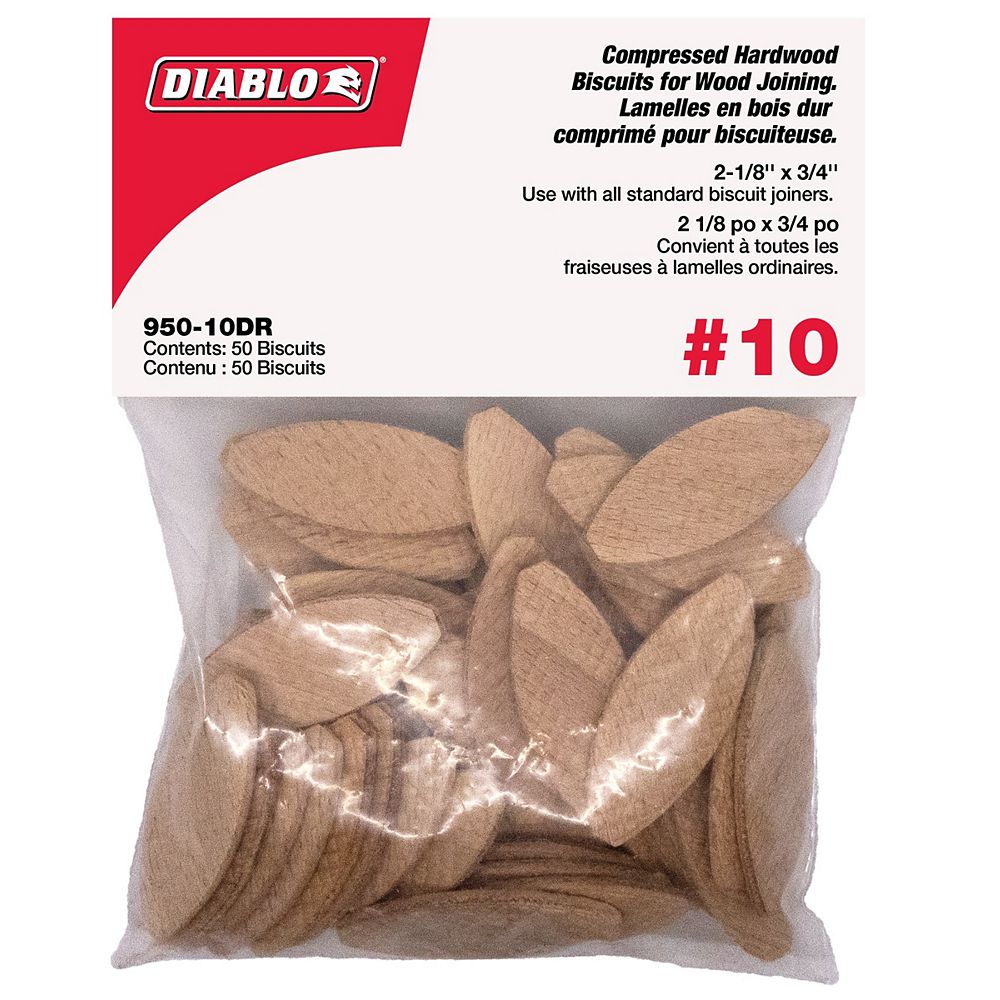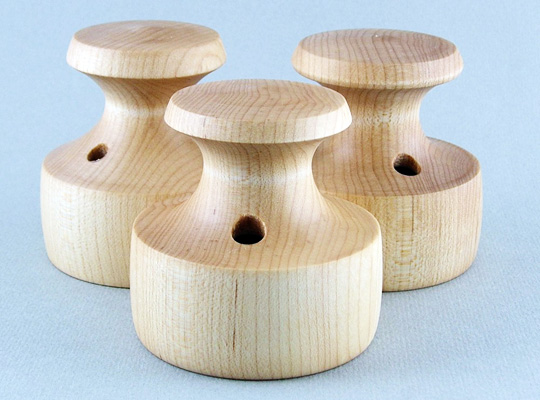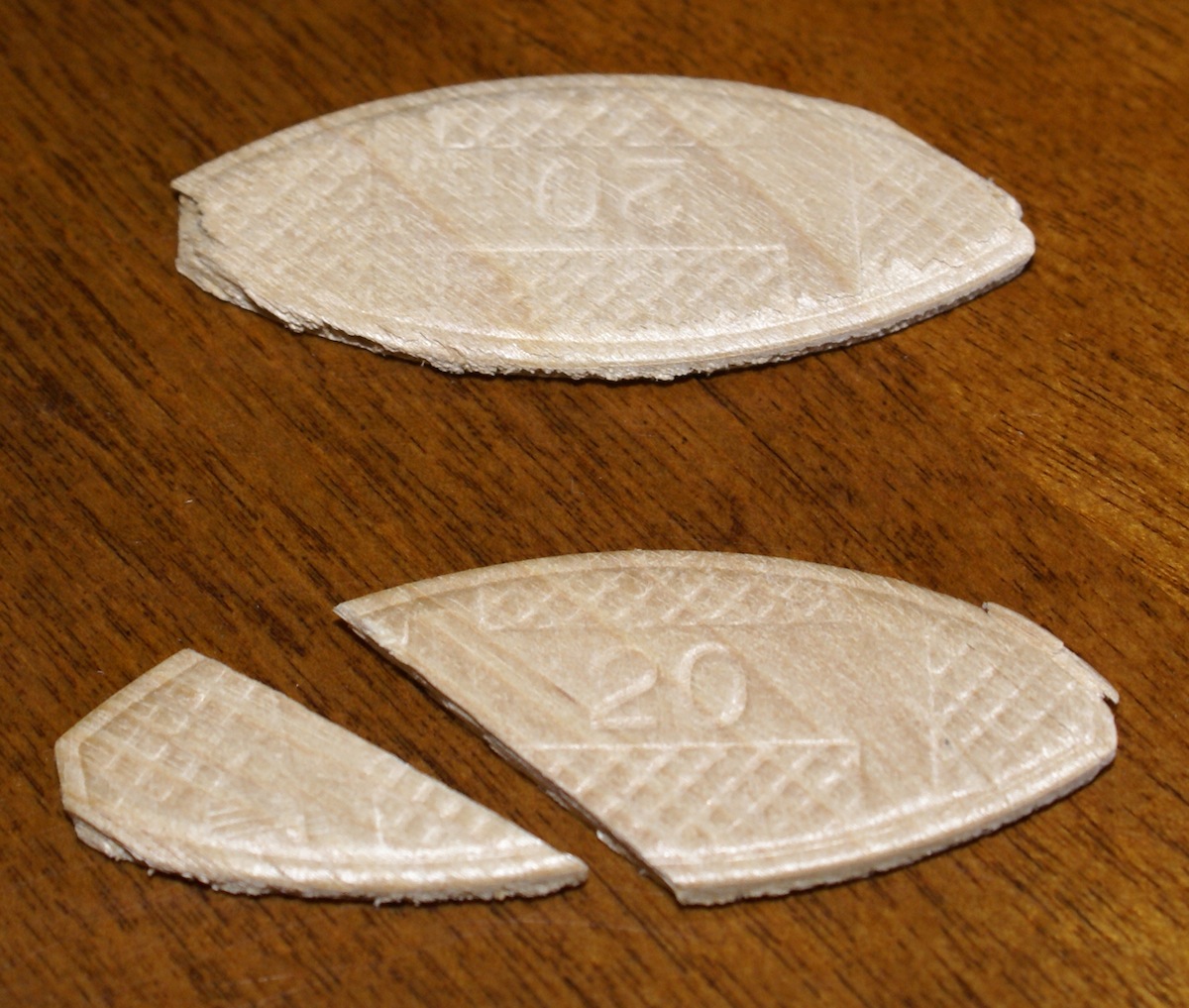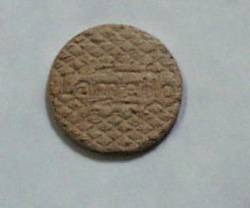Woodworking Biscuit. To use the jig, set the butt end of a rail against the jig side to determine the size and number of biscuits to insert in the joint. "Biscuits aren't in decline, they are just a different shape these days. A biscuit joiner (also known as a plate joiner) cuts half-oval slots in mating workpieces; then you glue in a football-shaped "biscuit" and clamp the joint tightly. (Common biscuit sizes are shown at left.) Biscuits add strength to joints and assist you in aligning workpieces.

When I first got serious about fine woodworking, the biscuit joiner was the latest and greatest thing. Here's how to set up a joiner to cut a typical joint. Our thin, oval-shaped biscuits joints are placed into the wood slot to join two pieces of wood together for a strong bond.
They will never lose shape, and their innovative gripping spikes bite in for an excellent hold. The trick is to leave the solid wood a fraction above the surface of the plywood, then sand it flush. Wood biscuits are small oval shaped discs that are inserted with the use of a biscuit joiner.
The wood biscuits are fitted into slots usually created with a biscuit joiner. These pegs were the precursor to wood biscuits. We stock the three most common biscuit sizes for use with all standard plate joiners such as Porter-Cable, Lamello, Freud, Ryobi, DeWalt and other popular makes.
After the cut is made, a pre-manufactured composite wood biscuit is glued and inserted into the slice. We stock the three most common biscuit sizes for use with all standard plate joiners such as Porter-Cable, Lamello, Freud, Ryobi, DeWalt and other popular makes. When I first got serious about fine woodworking, the biscuit joiner was the latest and greatest thing.
If you try to glue the edging on perfectly flush, a small section inevitably ends up lower than the surface of the plywood, which is a disaster. Or you can see recent projects by clicking on The Work above. The Domino joiner has become the biscuit joiner du jour.
When I first got serious about fine woodworking, the biscuit joiner was the latest and greatest thing. Here's how to set up a joiner to cut a typical joint. A biscuit joint is also known as a plate joint.
Wood Biscuits are made of FSC wood from well managed forests. Wood biscuits we supply is standard size widely being used with biscuit jointer. The biscuit strength comes from its expansion and glue; dowel strength comes from penetration depth, the tensile strength of the solid wood dowel, and glue.
Wood biscuits we supply is standard size widely being used with biscuit jointer. The biscuit, then, creates a solid connection between the two pieces of wood and, with glue, will create a sturdy joint. It is a different shape and may or may not be stronger, but they are basically loose tenon joints.
A biscuit joiner (also known as a plate joiner) cuts half-oval slots in mating workpieces; then you glue in a football-shaped "biscuit" and clamp the joint tightly. (Common biscuit sizes are shown at left.) Biscuits add strength to joints and assist you in aligning workpieces. For certain types of woodworking joints such as edge-to-edge joints, miter joints, T-joints, and corner joints, there is hardly a better choice than biscuit joints. After the cut is made, a pre-manufactured composite wood biscuit is glued and inserted into the slice.
If you want to see some awesome project builds, subscribe to my YouTube Channel Timber Biscuit Woodworks. If you try to glue the edging on perfectly flush, a small section inevitably ends up lower than the surface of the plywood, which is a disaster. They come in different sizes; each one of them has slightly different uses.
When I first got serious about fine woodworking, the biscuit joiner was the latest and greatest thing. I upgraded to the newer unit because I had a smaller unit that cut slots where the biscuit would literally flop around in the slot, making a good joint impossible (unless I did something wrong). Biscuits, for example, do not penetrate deeply into the woods being joined, whereas dowel depth can be extended simply by drilling deeper into the wood.
When I first got serious about fine woodworking, the biscuit joiner was the latest and greatest thing. The low prices make it easier to afford completion of all your. For certain types of woodworking joints such as edge-to-edge joints, miter joints, T-joints, and corner joints, there is hardly a better choice than biscuit joints.
They became popular rather fast because they allowed woodworkers to create strong, invisible joints quickly. It is essentially a powered, table-mounted jig that clamps the pieces to be joined and (using a spinning saw blade) cuts out slots. Wood Biscuits are made of FSC wood from well managed forests.
Wood, chipboard, and medium density fiberboard are all examples of wood that may be joined together. After the cut is made, a pre-manufactured composite wood biscuit is glued and inserted into the slice. Historically, of course, biscuits did not exist in the woodworking processes.
If you want to see some awesome project builds, subscribe to my YouTube Channel Timber Biscuit Woodworks. The biscuit strength comes from its expansion and glue; dowel strength comes from penetration depth, the tensile strength of the solid wood dowel, and glue. Or you can see recent projects by clicking on The Work above.
I share my woodworking experiences through social sites, project plans, and content creation.
The Domino joiner has become the biscuit joiner du jour.
A biscuit joint is made up of a flat, elongated slice cut into both pieces of the wood to be joined. It is a different shape and may or may not be stronger, but they are basically loose tenon joints. The wood biscuits are fitted into slots usually created with a biscuit joiner.





